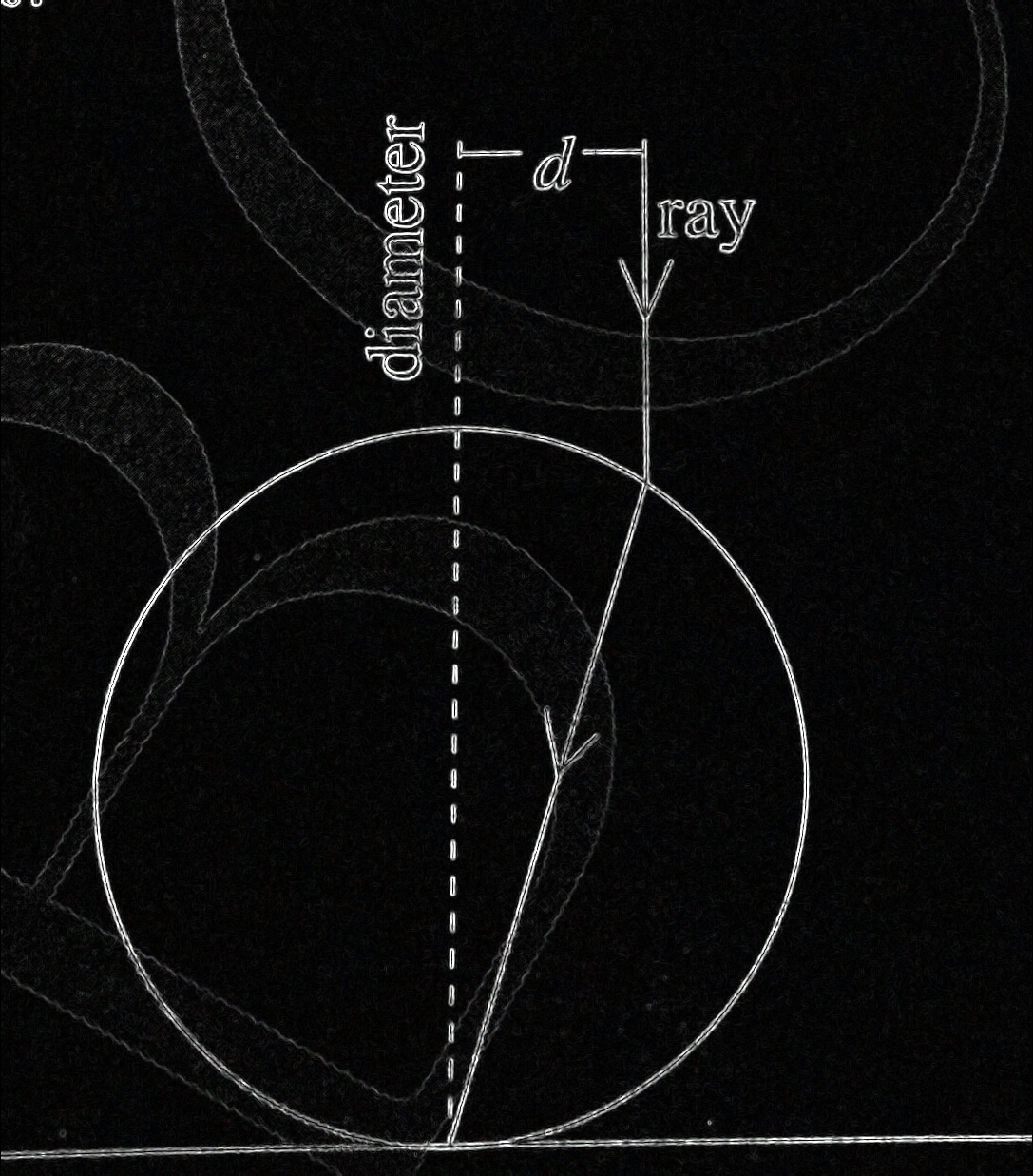1 LAKH POINTS PROBLEM!!!!
A transparent sphere of radius
and refractive index
is at rest on a horizontal surface.A ray of light is incident parallel to the vertical diameter and at a distance
from it.Let
be in range (
,
].Find
.
Assume: The rays intersects the diameter at the point of emergence.See the figure.
The figure is as shown below:

The answer is 3.414213562.
This section requires Javascript.
You are seeing this because something didn't load right. We suggest you, (a) try
refreshing the page, (b) enabling javascript if it is disabled on your browser and,
finally, (c)
loading the
non-javascript version of this page
. We're sorry about the hassle.
So we get i = 2 r
s i n ( r ) s i n ( i ) = n
2 c o s ( r ) = n
s i n ( i ) = r d
s i n ( 2 r ) = r d
Now using simple algebraic manipulation we get that 2 n 2 = r r + r 2 − d 2
0 < d < = r
Hence 2 < n < = 2 .So the answer is 2 + 2 = 3 . 4 1 4 2 1 3 5 6 2
NOTE: THIS IS INPHO 2007 QUESTION SO NO CLAIM OF ORIGINALITY IS MADE